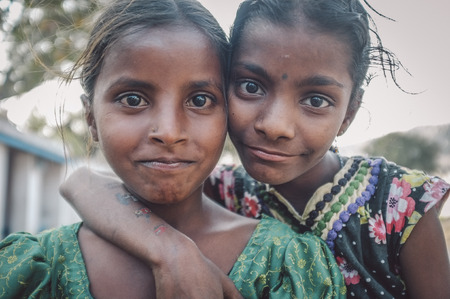1. Introduction to Sun and Soil Exposure in Indian Context
India, with its rich cultural heritage and diverse geography, has long held the sun and soil as vital elements of daily life and well-being. Across the vast expanse of the country, from the fertile plains of Punjab to the arid stretches of Rajasthan, exposure to sunlight and direct contact with soil have been deeply embedded in traditional Indian practices. These interactions are not just incidental but are integrated into daily rituals, agricultural work, spiritual customs, and even health routines. The significance of sun (Surya) worship can be traced back to Vedic times, where early morning sunbathing—known as Surya Namaskar—was believed to foster vitality and mental clarity. Similarly, walking barefoot on soil or mitti is a common sight in rural India, reflecting both a connection to Mother Earth (Bhoomi) and an age-old belief in grounding for health benefits. Regional variations exist; for example, people in southern states like Tamil Nadu practice outdoor yoga under the sun, while farmers in eastern states such as West Bengal spend long hours tending paddy fields barefoot. These traditions highlight how gender roles, age groups, and local climates shape adaptation strategies regarding sun and soil exposure. Today, understanding these practices is crucial not only for preserving cultural identity but also for harnessing their potential health benefits in modern Indian society.
2. Cultural Beliefs and Practices Related to Sun and Earth
In India, sun and soil exposure are woven deeply into the fabric of daily life, shaped by centuries-old customs, spiritual beliefs, and cultural taboos. These practices differ across regions, genders, age groups, and communities, reflecting the nation’s rich diversity.
Customary Rituals Involving Sun and Soil
For many Indian families, rituals involving the sun (Surya) and earth (Prithvi) are integral to their identity. Sun salutations (Surya Namaskar), performed at dawn, are practiced by both men and women as a form of worship and physical exercise. Children often play barefoot on earthen grounds during festivals or family gatherings, believed to promote grounding and connection with nature. Rural communities regularly conduct pujas in open fields, emphasizing direct contact with soil as auspicious.
Spiritual Aspects: Reverence for Nature
The sun is worshipped as a deity who grants health and vitality. Festivals like Chhath Puja in Bihar or Makar Sankranti across India see devotees—men, women, and children—offering prayers to the rising or setting sun while standing in rivers or on riverbanks, symbolizing purification through sun and earth elements. Similarly, touching the soil before entering a field or starting agricultural work is seen as seeking blessings from Mother Earth.
Cultural Taboos Across Gender and Age
| Group | Taboo/Practice | Explanation |
|---|---|---|
| Women (especially during menstruation) | Avoidance of direct soil contact | Belief that menstrual impurity can affect crop fertility or spiritual sanctity |
| Elderly | Limited sun exposure | Concerns about heatstroke or skin conditions lead to restricting outdoor activities during peak hours |
| Young Children | Encouraged to play in soil under supervision | Belief that early exposure builds immunity but requires monitoring for hygiene reasons |
| Men (working age) | No major taboos; active participation in farming rituals | Seen as primary custodians of land; daily sun/soil exposure considered healthy and essential |
Diverse Community Practices
Certain tribal groups in Central India hold annual ceremonies where both boys and girls must spend a night outdoors on bare earth to symbolize harmony with natural forces. In contrast, urban upper-caste families may discourage girls from prolonged outdoor activity due to social norms regarding skin complexion or modesty. Muslims performing Eid prayers outdoors exemplify another context where mass sun exposure has cultural significance.
Adapting Tradition in Modern Contexts
While these beliefs continue to shape behaviors, urbanization and scientific awareness are prompting gradual change. There is growing emphasis on balancing traditional wisdom with modern health recommendations—encouraging moderate sun exposure for Vitamin D synthesis while respecting cultural sensitivities related to gender and age. Such adaptation ensures that the heritage of sun and soil reverence remains relevant for all generations across India.
![]()
3. Gender Differences in Exposure and Adaptation
In India, gender plays a significant role in determining patterns of sun and soil exposure as well as the body’s adaptation to these environmental factors. Traditional societal roles and expectations influence how men, women, and non-binary individuals interact with their surroundings, which in turn affects their health and wellbeing.
Societal Roles and Outdoor Activities
Indian society often prescribes different outdoor responsibilities for each gender. Men are frequently engaged in agriculture, construction, or transportation jobs that require prolonged hours under the sun, leading to higher sun and soil exposure. Women, particularly in rural areas, are also involved in farming, gathering firewood, or managing household gardens; however, their outdoor activities may be interspersed with indoor chores. Non-binary individuals may face unique challenges, often dictated by local community acceptance, which can further influence their access to open spaces and types of outdoor engagement.
Clothing Norms and Cultural Practices
Clothing norms vary widely across India and are closely linked to gender identity. Men often wear lighter fabrics such as cotton shirts and dhotis or lungis, which allow some breathability but might expose arms and legs to sunlight. Women’s traditional attire—like sarees or salwar kameez—often covers more skin but can trap heat and reduce direct sun exposure. In some communities, women also use dupattas or scarves to shield their faces from dust and sunlight. For non-binary individuals, clothing choices may be influenced by both comfort and safety considerations within their social context.
Unique Interactions with Sun & Soil
The intersection of societal roles and clothing practices creates unique sun and soil interactions for each gender group. Men tend to develop greater tolerance for UV radiation due to repeated sun exposure but may be at higher risk for dehydration or sunburn if protective measures are neglected. Women’s adaptation is shaped by intermittent exposure combined with cultural coverings, potentially leading to vitamin D deficiency but offering some protection against skin damage. Non-binary individuals might experience inconsistent adaptation depending on their level of social acceptance and freedom to participate in outdoor activities.
Understanding these gender-based differences is essential for developing targeted health recommendations that respect cultural practices while promoting optimal adaptation to India’s diverse environmental conditions.
4. Age-Specific Adaptations and Needs
Understanding Life Stage Variations in Sun & Soil Exposure
Indias diverse climate and geography demand unique adaptations to sun and soil exposure across different life stages. From energetic children playing in the gullies of Rajasthan to elders tending kitchen gardens in Kerala, each age group experiences and responds to the environment differently. Considering health and nutrition, it is vital to examine how these adaptations impact well-being at every stage of life.
Children (Bachche): Building Immunity & Growth
For Indian children, moderate sun exposure is crucial for vitamin D synthesis—key for bone growth and immunity. Outdoor play on mitti (soil) not only fosters physical development but also introduces beneficial microbes that support gut health, a concept well understood in traditional Indian households. However, excessive sun can lead to dehydration or heat rash, so mothers often ensure children wear lightweight cotton clothing and provide nimbu pani (lemon water) as a natural coolant.
Youth (Yuva): Strengthening and Resilience
Adolescents and young adults benefit from regular sun exposure for optimal calcium absorption during peak bone mass development. Activities like cricket matches or yoga under early morning sunlight are popular. Urban youth may lack this due to indoor lifestyles; thus, awareness campaigns in colleges often promote “morning sun walks.” Soil contact remains limited but is encouraged through community gardening or NSS activities, fostering connection with nature and stress reduction.
Adults (Vayask): Balancing Demands of Modern Life
Working adults face challenges balancing sun exposure with professional commitments. Long hours indoors can result in vitamin D deficiency—a growing concern in India’s urban areas. Women, particularly homemakers, often engage in terrace gardening or drying papad on rooftops, integrating sun exposure naturally into daily routines. Men working outdoors require protection from harsh midday rays, using gamchas (cotton towels) or applying chandan (sandalwood paste) to prevent sunburn while still reaping the health benefits.
Elderly (Vriddh): Maintenance of Health and Mobility
For elders, gentle morning sunlight supports bone health and mood regulation—essential for preventing osteoporosis and depression. Traditional practices such as sitting in verandahs during sunrise remain common. Soil contact through light gardening helps maintain mobility and offers emotional satisfaction by nurturing plants.
Summary Table: Age-Wise Adaptation Strategies
| Age Group | Sun Exposure Benefits | Soil Contact Benefits | Adaptation Practices |
|---|---|---|---|
| Children | Vitamin D for growth; immune support | Gut health via beneficial microbes | Cotton clothing; hydration; supervised play |
| Youth | Bone strength; stress relief | Mental wellness; community engagement | Morning walks; sports; gardening clubs |
| Adults | Disease prevention; energy balance | Stress reduction; skill development | Terrace gardening; rooftop chores; protective gear |
| Elderly | Mood regulation; bone maintenance | Mobility; emotional fulfillment | Sunbathing in verandah; light gardening |
This nuanced approach highlights the importance of customizing sun and soil exposure practices according to age-specific physiological needs within India’s rich cultural context, ensuring holistic health at every stage of life.
5. Health Benefits and Risks Associated with Sun & Soil
Understanding the Dual Impact of Nature Exposure in India
In India, the interplay between sun and soil exposure holds significant influence over health, especially when considering the diverse geographic, climatic, and socio-cultural landscape. The benefits and risks associated with these exposures can vary greatly according to gender, age, and lifestyle habits unique to Indian communities.
Health Benefits: The Power of Sun & Soil
Vitamin D Synthesis
Sunlight is an essential source of vitamin D, a nutrient critical for bone health, immunity, and metabolic functions. In many Indian households, especially among women and children who may spend more time indoors due to cultural customs or educational commitments, mild sun exposure is encouraged during early mornings or late afternoons. This practice helps bridge the gap in vitamin D deficiency prevalent in urban and rural populations alike.
Grounding (Earthing) Practices
Traditional Indian practices such as walking barefoot on soil or grass are still common in villages and even among some urban residents. Grounding is believed to balance energy, reduce stress, and improve sleep quality. These rituals are often observed in different age groups—from elders tending to gardens to children playing outdoors—providing holistic wellness benefits that connect individuals to the earth’s natural energies.
Boosting Immunity
Both sunlight and direct contact with natural soil can enhance immune function. Regular exposure aids in regulating circadian rhythms and supports the body’s defense mechanisms against common infections. Many families encourage children to engage in outdoor play as a means of building resilience to seasonal illnesses—a practice deeply rooted in Indian parenting traditions.
Health Risks: Recognizing Potential Hazards
Heatstroke and Sunburn
The Indian climate can be harsh, particularly during peak summer months when temperatures soar above 40°C in several regions. Overexposure to the sun without adequate protection increases the risk of heatstroke, dehydration, and sunburn, especially for elderly individuals, outdoor workers, and young children. It is vital to promote wearing lightweight clothing, using hats or dupattas for shade, and staying hydrated during high-risk periods.
Exposure to Pollutants and Soil-borne Infections
Rapid urbanization has led to increased soil pollution from industrial waste, pesticides, and heavy metals. Contact with contaminated soil—common among agricultural workers and children playing outdoors—can lead to skin infections or gastrointestinal issues. Awareness about basic hygiene practices such as washing hands after outdoor activities is essential across all age groups.
Gender-Related Vulnerabilities
Cultural norms sometimes restrict women’s access to safe outdoor spaces or limit their sun exposure due to modesty codes or household responsibilities. This may exacerbate health risks like vitamin D deficiency while reducing opportunities for positive grounding experiences. Promoting inclusive community spaces and spreading awareness about safe sun & soil exposure can help bridge these gaps.
Overall, adapting sun and soil exposure based on age, gender, seasonality, and regional context enables Indian families to harness nature’s benefits while safeguarding against environmental risks.
6. Nutritional Interventions and Lifestyle Recommendations
Dietary Practices for Sun & Soil Adaptation
Adapting to India’s diverse sun and soil exposure requires region-specific dietary strategies. For communities in sun-rich regions like Rajasthan or Tamil Nadu, increasing antioxidant intake through seasonal fruits such as mangoes, papayas, and amla (Indian gooseberry) can help neutralize oxidative stress from intense sunlight. In northern states where winter sun is mild, fortified foods and traditional preparations using sesame seeds (til), jaggery (gur), and whole grains support vitamin D synthesis and energy needs.
Supplements: Modern Needs with Traditional Wisdom
While Indian diets are largely plant-based, some groups—especially women and the elderly—may benefit from targeted supplementation. Vitamin D3, calcium, and iron are crucial for those with limited outdoor activity or restrictive diets. Ayurvedic supplements like Ashwagandha support adrenal health during environmental stress, while Triphala aids detoxification after prolonged soil or pollutant exposure.
Locally Available Superfoods
Incorporate regionally grown millets such as ragi and bajra, which are rich in minerals for bone strength and energy. Leafy greens like drumstick leaves (moringa) and curry leaves provide essential micronutrients. Coconut water and buttermilk (chaas) are excellent rehydration drinks that help maintain electrolyte balance in hot climates.
Ayurvedic Insights by Gender and Age
Ayurveda recommends different approaches based on life stage and constitution (prakriti). For children, ghee and nuts promote growth; for adolescent girls, sesame seeds balance hormonal changes; post-menopausal women benefit from turmeric milk for joint health. Elderly populations should favour easily digestible khichdi with added spices like cumin and ginger to enhance absorption.
Daily Routines for Optimal Adaptation
Embrace a daily rhythm aligned with nature: morning sunlight exposure for 15–20 minutes boosts vitamin D; grounding practices like walking barefoot on grass or soil connect the body with earth’s energies. Yoga asanas such as Surya Namaskar (Sun Salutation) optimize both physical fitness and solar adaptation across all ages. Regular oil massage (abhyanga) with coconut or sesame oil protects the skin from harsh elements.
Cultural Considerations
Respecting local customs—like fasting during certain festivals—can be balanced with nutrient-dense foods at pre-dawn meals (suhūr) or breaking fasts with soaked almonds, dates, and seasonal fruits. Community meals (langar) offer an opportunity to include diverse pulses and vegetables that fortify collective well-being in varying environmental conditions.
Conclusion: Holistic Indian Approach
Combining indigenous food wisdom, Ayurvedic principles, and practical lifestyle routines enables every gender and age group in India to adapt effectively to their unique sun and soil exposures, fostering resilience, vitality, and harmony with the environment.
7. Conclusion: Building Resilience Through Traditional Wisdom and Modern Science
Summary of Key Findings
The journey of understanding sun and soil exposure adaptation across genders and age groups in India reveals a rich interplay of traditional practices and modern scientific insights. Indian cultural heritage, such as early morning Surya Namaskar (sun salutations) and the use of mitti lep (soil packs), has long recognized the health benefits of balanced exposure to natural elements. Scientific research now supports these practices by highlighting how vitamin D synthesis, immune modulation, and mental wellness are influenced by both sun and soil interactions. However, adaptation strategies must be tailored: children, women, men, and elders each have unique physiological needs shaped by factors like skin type, hormonal cycles, occupational roles, and lifestyle habits.
Actionable Steps for All Ages and Genders
For Children
Encourage playful outdoor activities during safe sun hours (before 10 am or after 4 pm) to promote bone health and immunity. Supervise mud play and barefoot walking in clean, pesticide-free areas to foster sensory development and gut health.
For Women
Prioritize moderate sun exposure especially for adolescent girls and pregnant women to support hormonal balance and fetal development. Integrate traditional practices such as applying turmeric before soil therapy to prevent infections.
For Men
Incorporate regular outdoor exercise or farming activities during non-peak UV hours. Embrace ancient techniques like Chhat Pooja to synchronize sun-soil rituals with community bonding.
For Elders
Facilitate gentle morning walks in gardens or fields, emphasizing gradual exposure. Use local herbal balms post-exposure for skin resilience, drawing from Ayurveda’s vast pharmacopeia.
Rooted in Indian Culture: The Way Forward
By blending ancestral wisdom with modern recommendations—such as wearing cotton clothing for optimal sunlight absorption or ensuring hygienic soil contact—families can build lifelong resilience against environmental stressors. Panchayat initiatives can promote safe communal spaces for sun and soil engagement, while schools may include nature-based curriculums inspired by Indian epics that celebrate earth and sun worship. Ultimately, respecting regional diversity—whether it’s the Thar desert or Western Ghats—ensures that every Indian, regardless of gender or age, adapts healthily to their unique environment.
Towards Holistic Health
A conscious return to our roots, coupled with scientific vigilance, will empower individuals and communities across India to harness the healing synergy of sun and soil. As we move forward, let us honor both tradition and innovation in building a healthier Bharat for all generations.


